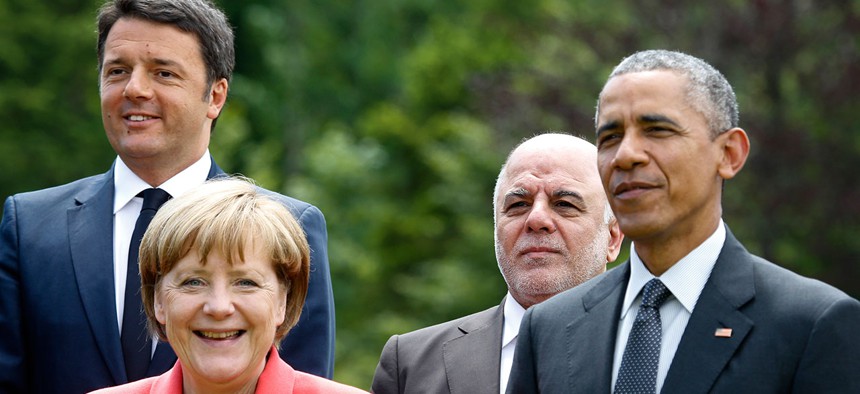
Markus Schreiber/AP
Powerful People are Terrible at Making Decisions Together
Traits commonly found in leaders can be obstacles when it comes to collaboration.
Corporate boards, the US Congress, and global gatherings like the just-wrapped World Economic Forum in Davos, Switzerland, are all built on a simple theory of problem solving: Get enough smart and powerful people in a room and they’ll figure it out.
This may be misguided. The very traits that compel people toward leadership roles can be obstacles when it comes to collaboration. The result, according to a new study, is that high-powered individuals working in a group can be less creative and effective than a lower-wattage team.
Researchers from the Haas School of Business at the University of California, Berkeley, undertook an experiment with a group of healthcare executives on a leadership retreat. They broke them into groups, presented them with a list of fictional job candidates, and asked them to recommend one to their CEO. The discussions were recorded and evaluated by independent reviewers.
The higher the concentration of high-ranking executives, the more a group struggled to complete the task. They competed for status, were less focused on the assignment, and tended to share less information with each other. Their collaboration skills had grown rusty with disuse.
“When you’re the top dog in your organization day to day, you’re used to when you say jump, people jump,” lead author Angus Hildreth said. “In a context when you’re surrounded by peers, it’s an uncertain environment.”
Power can be both an obstacle and a motivator when it comes to performance. In the lab, the researchers saw similar patterns among student subjects arbitrarily appointed leaders and followers.
When asked to work on a creative task as a team, groups of students who had been assigned as leaders offered fewer creative solutions than groups of mixed status. But when asked to do the task alone, students who had been given higher status at the beginning of the experiment performed better than those who hadn’t.
Given that the “best and brightest minds” approach to problem solving isn’t going away anytime soon, the Haas team is now looking at how to improve high-status group dynamics.
Hildreth has some ideas, based on his experience as a corporate chief of staff. (He managed the day-to-day affairs of top executives at consulting firm PwC, before coming to academia.) One important step, he says, is to provide all-star teams with just the right amount of information—no more, no less.
“You give them not enough [data] and they claim they’ve not enough information to make a decision,” he said. “You give them too much, and they’ll find a way to disagree over it.”






